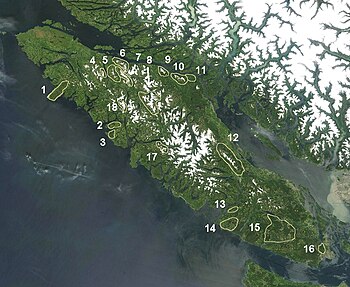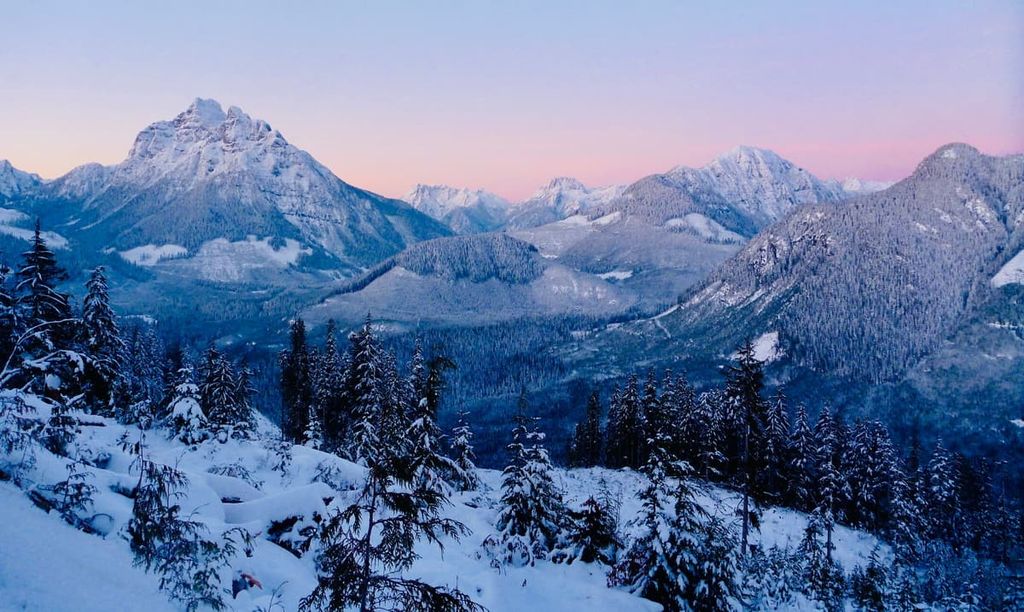Mountains on Vancouver Island offer diverse landscapes and challenging terrain. The island’s peaks are a haven for hikers and outdoor enthusiasts.
Vancouver Island, located off Canada’s Pacific Coast, is home to an impressive range of mountainous terrain, including the famous Strathcona Provincial Park. This region is not only renowned for its scenic beauty but also for the variety of outdoor activities it supports, such as hiking, climbing, and skiing.
The island’s highest point, the Golden Hinde, stands at 2,195 meters and provides breathtaking views and rewarding climbs for adventurers. The mountains here are part of the Insular Mountain Range, which boasts a unique ecosystem with rich biodiversity. Visitors are drawn to the lush forests, alpine meadows, and the chance to witness wildlife in their natural habitats, making it a popular destination for eco-tourists and nature lovers.
Introduction To Vancouver Island’s Mountainous Splendor
Vancouver Island’s landscape boasts a rich mosaic of mountain ranges. From the rugged peaks of Strathcona Provincial Park to the iconic, snow-capped silhouette of Mount Washington, each elevation offers a unique vista. The island’s geography varies from gentle hills to formidable mountain spires. Topography here shapes the climate and biodiversity, creating rich habitats for wildlife.
Explorers find endless adventures among these peaks, from hiking and skiing to wildlife photography. Families enjoy the accessible trails, while seasoned climbers tackle the challenging ascents. This region truly is a paradise for outdoor enthusiasts. The mountains are not just landforms but symbols of natural beauty and adventure.
Historical Significance Of The Island’s Mountains
The mountains of Vancouver Island hold a rich tapestry of history. First Nations peoples have a long-standing connection with this rugged terrain. Their stories, culture, and spirituality are deeply intertwined with the majestic peaks. Mountains serve as sacred sites and provide resources essential for their way of life.
European explorers ventured here in the 18th and 19th centuries. They began the practice of naming the mountains. Names were often chosen to honor explorers, royalty, or to describe the terrain. This era marked a significant shift in the island’s history. The mountains became maps of exploration and colonial expansion.
Vancouver Island’s Highest Summits
Golden Hinde stands tall as Vancouver Island’s pinnacle, reaching 2,195 meters above sea level. This majestic peak offers challenging terrain for experienced hikers. Stunning vistas reward those who ascend its heights. The climb requires multi-day commitment, with hikers often camping en route.
Other peaks of note include:
- Elkhorn Mountain – Known as the island’s second highest, it presents a notable spire.
- Rambler Peak – Features rugged routes for adventurous climbers.
- Victoria Peak – Provides accessible trails for various skill levels.
- The Red Pillar – Offers a distinctive red hue that captures the eye.
Each mountain provides unique experiences for outdoor enthusiasts. They contribute to the island’s rich topography.

Credit: en.wikipedia.org
Geology Of Vancouver Island Mountains
The rock formations on Vancouver Island showcase a diverse geological history. These mountains primarily consist of igneous and metamorphic rocks. The rocks date back to the Triassic period, making them over 200 million years old.
Glacial activity has deeply influenced the island’s landscape. During the last Ice Age, glaciers carved out the valleys and shaped the peaks. This process left behind a rugged terrain that is characteristic of the region today.
Flora And Fauna Among The Peaks
The peaks of Vancouver Island host a vibrant alpine ecosystem. This high-altitude area supports a variety of plants and animals. Unique wildlife habitats are nestled among the rugged terrain. These habitats offer refuge to species adapted to the cooler climate.
Mountain goats and marmots are common, thriving in the harsh conditions. The Island’s flora is equally impressive, with hardy mountain flowers like the Vancouver Island alpine forget-me-not. Their survival in thin soils is a testament to nature’s resilience.
| Flora | Fauna |
|---|---|
| Alpine Forget-Me-Not | Mountain Goat |
| Mountain Heather | Vancouver Island Marmot |
Recreational Activities In The Mountains
Vancouver Island’s mountains offer thrilling activities for adventurers. Hiking and backpacking trails abound, allowing explorers to immerse in nature’s beauty. Well-marked paths lead through lush forests, alongside streams, and up to breathtaking viewpoints.
Mountain climbing presents a challenge for those seeking adrenaline. With peaks of various difficulties, climbers can find the perfect route to test their skills. Guided climbs are available, ensuring safety and an unforgettable experience.
Adventure seekers can enjoy the rugged terrain and the panoramic scenery. The mountains offer something for all, from casual day-hikes to multi-day backpacking excursions. Remember to prepare adequately and respect the natural environment to ensure a safe and enjoyable experience.
Conservation Efforts And Protected Areas
Vancouver Island boasts several protected areas. These places help keep nature safe. Pacific Rim National Park Reserve is one key spot. It covers a big part of the island’s western coastline. This park is important for its rich biodiversity and native species.
Local groups work hard to protect these lands. They plant trees and clean rivers. Their efforts ensure that wildlife thrives. These actions also maintain natural habitats. Everyone can help in these efforts. Learning about these areas is a good first step.

Credit: www.flickr.com
Experiencing The Mountains: Tips For Visitors
Visiting the majestic mountains of Vancouver Island offers breathtaking views and thrilling adventures. The ideal time for exploration spans from late spring to early fall. During these months, the weather is most favorable with clear skies and mild temperatures. Outdoor enthusiasts find this period perfect for hiking and sightseeing.
Before heading into the wilderness, ensure safety and readiness. It’s crucial to have a detailed map, a first-aid kit, and adequate food and water supplies. Always inform someone about your travel plans and expected return time. Wearing the right gear, such as sturdy boots and weather-appropriate clothing, is vital for comfort and protection. Remember, preparedness is key to a memorable mountain experience.
Cultural Impact And Indigenous Connections
The mountains of Vancouver Island hold deep significance for Indigenous peoples. These towering landscapes are not just geographical features, but also cultural landmarks. For generations, these mountains have served as sacred sites, offering a connection to ancestral traditions and stories.
Indigenous communities revere these spaces for spiritual practices and traditional uses. They view mountains as living entities, integral to their way of life. Respect for the land is a core value, shaping their approach to environmental stewardship.
Today, Indigenous groups are actively involved in the conservation and management of these areas. They work to preserve the biodiversity and cultural heritage of the mountains. Their knowledge and leadership are crucial in maintaining the health of these ecosystems for future generations.

Credit: peakvisor.com
Future Of Vancouver Island’s Mountains
The mountains of Vancouver Island face significant changes due to climate change. Melting glaciers and shifting weather patterns pose threats. Conservation efforts are crucial for the future. Sustainable tourism can play a key role.
Sustainable tourism promotes environmental responsibility. Visitors are encouraged to minimize their footprint. Local economies benefit from eco-friendly practices. This approach supports mountain preservation.
| Climate Change Impact | Response |
|---|---|
| Melting Glaciers | Eco-conscious travel |
| Changing Weather | Conservation Projects |
| Wildlife Habitats | Protected Areas |
Frequently Asked Questions
What Are The Mountains On Vancouver Island Called?
The mountains on Vancouver Island are known as the Vancouver Island Ranges.
What Are The 3 Mountains In Vancouver?
Vancouver’s three prominent mountains are Grouse Mountain, Mount Seymour, and Cypress Mountain. They offer outdoor activities year-round and stunning city views.
Can You See The Mountains From Vancouver Island?
Yes, you can see mountains from Vancouver Island, including the striking views of the Beaufort Range and Mount Arrowsmith.
What Mountains Do You See From Victoria, Bc?
From Victoria, BC, you can see the Olympic Mountains across the Juan de Fuca Strait in Washington State. The nearby Canadian peaks include Mount Douglas and the Malahat.
Conclusion
Exploring the mountains of Vancouver Island offers a unique blend of adventure, tranquility, and breathtaking scenery. Whether you’re an avid hiker, a wildlife enthusiast, or someone seeking a peaceful escape, these peaks provide the perfect backdrop. Remember, every trail promises a new discovery, making Vancouver Island a must-visit for nature lovers.